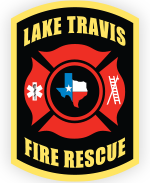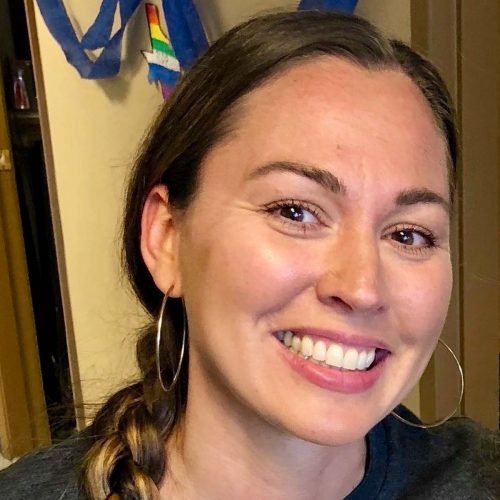Introduction
 As our community navigates the impact of the COVID-19 pandemic, Lake Travis Fire Rescue (LTFR) braces for a long and protracted period of uncertainty and dynamic changes. This document is a living document that is subject to changing by the hour as LTFR is made aware of new developments in our community’s public health and operational demands and challenges dictate. All employees shall familiarize themselves with this document and future updates.
As our community navigates the impact of the COVID-19 pandemic, Lake Travis Fire Rescue (LTFR) braces for a long and protracted period of uncertainty and dynamic changes. This document is a living document that is subject to changing by the hour as LTFR is made aware of new developments in our community’s public health and operational demands and challenges dictate. All employees shall familiarize themselves with this document and future updates.
Board Of Commissioners
The Travis Emergency Services District No. 6 Board of Commissioners (BOC) is the district’s governing body. The BOC receives high-level updates from the fire chief, staff, and other officials on the status and impact of operations, changes in service delivery, and workforce strength. The BOC’s role during the COVID-19 pandemic is one of community representation, strategic planning, executive direction/ consultation, formal authorizations of declarations, and budgetary approval. On March 20, 2020, the Travis County Emergency Services District No. 6 President authorized the Travis County Emergency Services District No. 6 Declaration of Local State of Disaster due to Public Health Emergency. This declaration authorizes the fire chief to make all decisions regarding the use of all available resources of the District, including but not limited to the District’s physical assets, personnel staffing, and financial resources, to assist in the District’s response to this situation; provided that all such actions are promptly reported to the President of the BOC. The District is utilizing technology to facilitate continued government operations as it relates to meetings, appeal hearings, and BOC work.
Administrations
The LTFR Administration Division has been ordered to work from home as much as possible. There are specific District matters that will require a physical presence at a LTFR location, but time duration will be brief and technology will be used to facilitate district business when possible. In addition to managing the on-going day-to-day needs of the administration division, Administrations will also be assigned to monitor and navigate the following matters:
- Monitor sales tax revenues throughout the district. Understanding that sales tax will be lower than anticipated and there is a two-month lag in reporting, the district should start seeing the effects in June 2020. Retail, lodging & food, and recreation make up approximately 50% of our sales tax revenues and our strongest months are in the summer.
- Ad valorem tax (property tax) is dependent on appraised values therefore if values start decreasing, we will see the effect in FY21 or FY22. This is in addition to Travis Central Appraisal District’s decision not to reappraise residential properties this year. Staff will work to determine if the pandemic qualifies as a disaster (per Senate Bill 2) allowing the District to increase our tax rate by 8% vs. 3.5% without an election.
- The District will review the FY20 budget for areas of non-essential activities through September 2020.
- The District will start the FY21 budget process soon and may limit new and nonessential programs due to the potential decrease in revenue.
Operations
As COVID-19 spreads to our workforce, the following staffing levels have been designed to adjust to the depth of available firefighters. An email will be sent out to all District employees when staffing levels change. COVID-19 Staffing Level Guidelines Level 1 – Business as normal. This includes necessary backfill to keep staffing levels at the normal minimum. Scheduled vacation leave still stands. Level 1 staffing levels include:
- 4 personnel per Engine/Quint
- 2 Battalion Chiefs
- 1 Inspector/Investigator
- At the discretion of the command staff, possible 2 personnel on a Squad (0700-1900) to replace engines/quints on Priority 3 Sick and Respiratory calls:
- If staffing level allows via Signup or extra staffing
- Won’t SMOT for squad
- staffed with 1-Paramedic/AEMT and 1-EMTB
Triggers to LEVEL 2: ~ 25% decrease in personnel ~ depletion of sign up and SMOT for up to 24-48hrs Level 2 –All first out units at a three-person minimum that can increase back to fourperson as soon as personnel is available to bring levels back up in addition to assigning Prevention Division to operational roles. No changes to the number of battalion chief positions or backfill. No changes to vacation leave already scheduled. Level 2 staffing include:
- 3-4 personnel per Engine/Quint
- 2 Battalion Chief
- At the discretion of the command staff, possible 2 personnel on a Squad (0700-1900) to replace engines/quints on Priority 3 Sick and Respiratory calls:
- If staffing level allows via Signup or extra staffing
- Won’t SMOT for squad
- staffed with 1-Paramedic/AEMT and 1-EMTB
Triggers to LEVEL 3: ~ Minimum staffing not met without going into frequent Involuntary Holdover Level 3 – All first out units of three-personnel and the suspension of one battalion chief position in favor in keeping first out units staffed. Possibility of voluntary cancellation of scheduled vacation leave or reduction of allowable hours of vacation allowed off per shift. Level 3 staffing includes:
- 3 personnel per Engine/Quint
- 1 Battalion Chief
Triggers for Level 4: ~Greater than 40% decrease in personnel or failure to keep to at least 3 personnel per engine/quint. Level 4 – Worst-case scenario: Fire chief will consider a number of options including but not limited to:
- Staffing brush trucks or squads if engines/quints units are under three personnel,
- Determining what units are staffed and where, station brownouts, or station closures due a shortage of available firefighters.
Level 4 staffing includes:
- 3 personnel per Engine/Quint (Number of Engines/Quints TBD)
- 2 personnel Brush Trucks in place of an Engine/Quint if needed
- 1 Battalion Chief
Prevention
- Any non-essential maintenance inspections are suspended.
- Any inspections at a health care facility unless warranted by State regulations are suspended. Any inspections that would place personnel in a situation where a large number of people are prohibited from gathering as defined by any State, Country, Municipal or District order are suspended.
- New construction inspections can continue as usual, so long as no significant risk is placed to the employee(s) or citizens. These inspections should take place during non-business hours, if possible.
- Code enforcement and investigations will continue as normal.
- The status of fuel crew mitigation projects will each be assessed on a case-by-case basis by Capt. Glenn Trubee.
Training
All in-person training shall be cancelled until further unless it is contained to a station or company level. Multiple company training is cancelled unless absolutely necessary to facilitate mission-critical operations relating to the pandemic and responses, but is limited to 10 personnel. Video conferencing shall be used whenever possible. The District will rely heavily on on-line training for the foreseeable future. Company level training at the station shall be low impact and not place an employee in a position of getting injured unnecessarily. Administration shall work with personnel signed up for outside/external training already paid for that has been cancelled and seek a full refund versus getting “credits” for future training that has not be scheduled with a specific date in 2020.
Logistics
Logistics will continue to function as normal with work from home allowances and may request assistance from other divisions to ensure supply chains are managed.
- Additional thermometers have been on order, waiting for delivery. Efforts are being made to secure additional thermometers form other sources.
- Half-face respirators and SCBA mask cartridges have been ordered.
- Addition medical PPE supplies are beginning to arrive.
Community Engagement
All public education and public relations events are suspended until further notice, which includes all events requested by the public, walk-up station tours, and any District sponsored event.
Reporting Exposures
As with anything we do, reporting is key. Employees shall ensure that all required documentation of all incidents, injuries, and exposures are properly documented. Company officers shall review documentation for its completion before submitting to human resources as incomplete documentation delays the process.
- Human Resources is processing exposure claims and preparing a digital option to submit future exposure and injury claims.
- Medical Operations is working with the Capital Areas Medical Operations Center (CaMOC) to track down specifics on source patient status for existing exposures.
Uniformed personnel shall follow published general orders and material for reporting COVID-19 exposures.
Work Space Disinfectant
All employees shall take an active role in cleaning their work space and follow published polices and procedures on specific cleaning processes. Common touch points such as door knobs/handles, railings, counter and desk surfaces, shall be disinfected at the beginning and end of work periods. Areas that are not being used for necessary work shall be closed off to reduce the number of areas that need to be cleaned and monitored.





